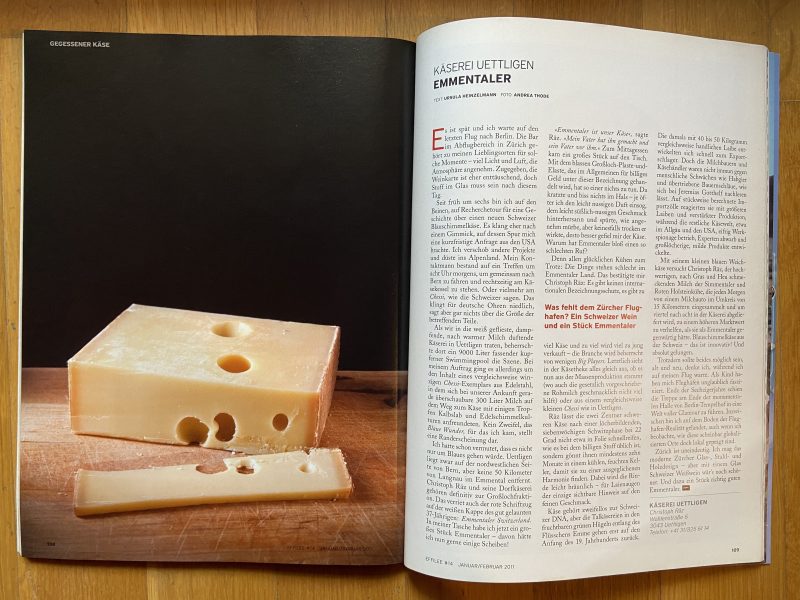This a monthly series which I have been publishing for quite some years. You can subscribe here, to get the latest cheese delivered directly on to your screen.
Emmental? Isn’t that that pale more-holes-than-boring-plasticky stuff, really cheap and often leaving a burning feeling on your tongue? Yeah, sure – rare is the success story which does not end in tears due to commercial cannibalisation, sadly. But fortunately, almost as often, eventually, it also leads to a return to the origins, the actual reason for its success. Therefore I offer you: Emmental. With that gorgeous, discreet aroma, that hint of sweetness and walnuts, pleasantly mellow, but not dry at all…

In January 2014 I wrote about Emmental for Effilee magazine, after having travelled to its origin:
„Because in spite of all those happy cows: Emmental ain’t in good shape. There is no international protection of origin, there is too much cheese, of which too much is sold too young, and trade is dominated too much by a few Big Players. In the end it all looks too similar in the cheese counters, no matter if it stems from hurried mass production (where the legally prescribed raw milk really doesn’t make a difference) or from a comparatively small Chaeschuchi. In the latter case the huge wheels, after sweatening for seven weeks at 22°C to encourage the holes to form, do not mature the fast way, sealed in plastic, as is the norm for the industrial stuff, but for at least seven months in cool, humid caves, to help them find that balanced harmony. The rind tends to turn brownish during that time, and that for most people is about the only clue for the much finer taste.
Without any doubt cheese is part of the Swiss DNA, and in the valley of the river Emme (which is what Emmental literally means) it can be traced back to the 13th century. The creameries on the valley floor however mostly go back to early 19th century. Back then the 40 to 50 kilo wheels were somewhat easier to handle and quickly became an export hit to far away places such as Berlin and Russia. The good dairy farmers and cheese merchants weren’t impervious to human flaws such as greed and excessive shrewdness, as the Swiss writer Jeremias Gotthelf documented so well in his book Die Käserei in der Vehfreude. They counteracted import tariffs per wheel with producing ever larger ones and ever more of those, while the rest of the cheese world, such as the Allgäu and the US, were busy doing industrial espionage, coaxing away master cheesemakers and coming up with their own large-holed, mild-tasting products.“
Christoph Räz and his comparatively small creamery in Uettligen back then represented a small minority. Whereas now the return to the origins in the Emmental is official, so to say, in the form Emmental AOP URTYP® (yes, it’s registered and all that, once burnt…). Undergoing two selection processes and matured for at least 12 months, of which at least seven in humid caves. Raw milk, of course. Seriously, and reliably cool stuff with a lot of aroma and taste, never loud, but refined and deep. Perfect for all your autumnal longings and needs. Enjoy!

